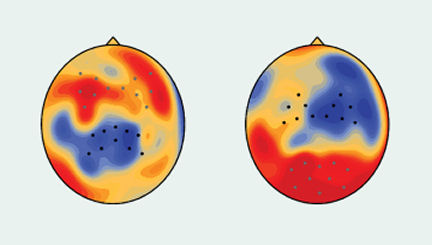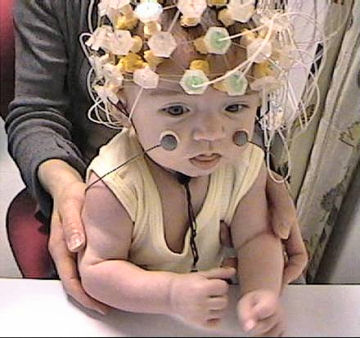Baby number whizzes
The brains of very young babies have a sense of numbers.
Share this:
- Share via email (Opens in new window) Email
- Click to share on Facebook (Opens in new window) Facebook
- Click to share on X (Opens in new window) X
- Click to share on Pinterest (Opens in new window) Pinterest
- Click to share on Reddit (Opens in new window) Reddit
- Share to Google Classroom (Opens in new window) Google Classroom
- Click to print (Opens in new window) Print
By Emily Sohn
It takes years of school to develop math skills, but learning about numbers starts earlier than you might think. At 3 months of age, babies have already started acquiring a concept of “how much,” according to a new study.
The finding isn’t a total surprise. Previous research had suggested that even very young babies can tell when the number of objects in a group has changed. But some scientists suspected that the babies in these studies were simply reacting generally to the fact that something had changed. The new study, however, supports the idea that babies have some sense of numbers.
 |
|
These images show an average baby’s brain from above. The image on the left shows electrical activity in response to a change in the number of objects the baby is viewing. The image on the right shows the infant’s brain activity in response to a change in the type of objects. Red areas are most active. Blue areas are least active.
|
| Véronique Izard |
Véronique Izard of Harvard University and her colleagues studied 36 infants, all 3 months old. During the tests, each baby wore a cap with sensors that recorded electrical activity in the brain (see “Babies Prove Sound Learners”).
The babies sat in a parent’s lap and watched a series of images on a computer screen. Most images showed the same object, such as a cartoon character. For a while, the number of the objects in the pictures didn’t change.
 |
|
Sensors applied to this baby’s head measure patterns of electrical activity.
|
| Véronique Izard |
Then the images occasionally began to display a different object, or a different number of one of the objects the babies had previously looked at. As soon as something changed, the babies’ brains responded with a specific pattern of electrical signals.
The researchers used a computer model to analyze these signals. They discovered that one part of the brain (near the top on the left side) responded when the object in the image changed.
A different part of the brain (lower and on the right side) responded when the number of objects in the image changed. This was not the area of the brain that is involved in attention. That suggests, Izard says, that the babies’ brains are doing more than just reacting to a change in what they’re seeing—they actually seem to be able to distinguish number changes from other types of changes.
Numbers and amounts are important concepts in our lives. Even though infants are years away from adding, subtracting, multiplying, and dividing, their brains seem to be preparing for a time when they finally will.
Going Deeper:
Bower, Bruce. 2008. Tots who tote: Babies show neural signs of budding number sense. Science News 173(Feb. 9):84-85. Available at http://www.sciencenews.org/articles/20080209/fob4.asp .
Sohn, Emily. 2008. Babies prove sound learners. Science News for Kids (Jan. 16). Available at http://www.sciencenewsforkids.org/articles/20080116/Feature1.asp .How much babies know. Science News for Kids (March 22). Available at http://www.sciencenewsforkids.org/articles/20060322/Feature1.asp .
______. 2006.
______. 2003. It’s a math world for animals. Science News for Kids (Oct. 8). Available at http://www.sciencenewsforkids.org/articles/20031008/Feature1.asp .







